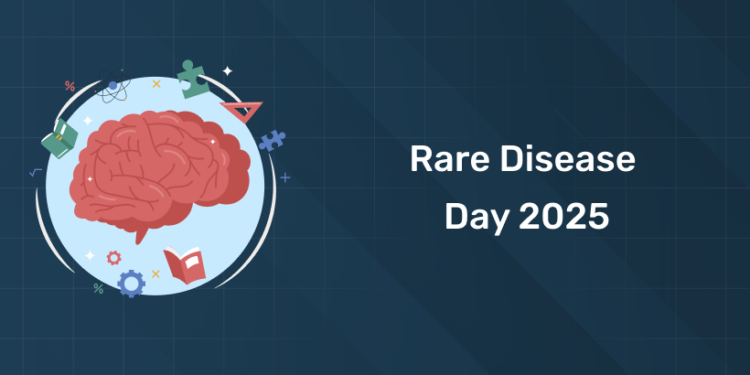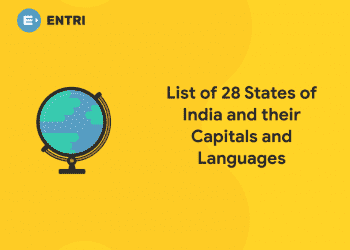Table of Contents
World Rare Disease Day is celebrated on 28 February annually. If we read through the US’s Orphan Drug Act of 1983, it describes Rare disease as any disease affecting fewer than 200,000 people. Sadly, at this point, many of these rare diseases are without cures or treatment due to the significant absence of people available to participate in scientific studies. Across the globe, people with rare diseases struggle to receive a proper diagnosis and get treatment. Every year, EURORDIS (The European Organization for Rare Disorders), organizes the Rare Disease Day to increase awareness about the rare medical conditions and to comfort both patients and their family.
World Rare Disease Day 2025 History
In the United States, a rare disease is defined as a condition that affects fewer than 200,000 people in the US. This definition was created by the US Congress during the 1983 Orphan Drug Act. In Europe, a disease defined as rare when it affects fewer than 1 in 2,000 people. The World Health Organization (W.H.O.) has suggested that a rare disease should be defined as one with a frequency of less than 6.5 – 10 per 10,000 people. So every country defines a rare disease most appropriate in the context of its own population, the health care system and resources.
In India, there has no standard definition for rare diseases. Considering our population, ORDI (Organization for Rare Disease in India) suggests a disease be defined as rare if it affects 1 in 5,000 people or less. Rare diseases are also known as orphan diseases because drug companies were not interested in adopting them to develop treatments. There are more than 7000+ Rare Diseases are reported across the globe, and 1 in 20 Indians, around 70 million is affected by one of these RDs.
World Rare Disease Day 2025 Significance
1: Who was the first woman President of India?
The European Organisation for Rare Diseases (EURORDIS) organized the very first World Rare Disease Day held on February 29, 2008. February 29 was chosen because February 29 is a “rare day,” and 2008 was the 25th anniversary of the passing of the Orphan Drug Act in the United States. From 2008 onwards EUROORDIS organizes the World Rare Disease day annually on the last day of February with various awareness programmes across the globe. In India there are 256 Rare diseases are registered with ORDI, a national umbrella organization representing all patients with rare diseases in India. Some of these diseases are:
- Duchenne Muscular Dystrophy (DMD)
- Farber Disease (ACID CERAMIDASE DEFICIENCY)
- Gaucher Disease
- GM2 Gangliosidosis
- Hirschsprung’s disease
- IEM Disorders – (Inborn errors of metabolism)
- Interstitial Cystitis
- Jansen’s metaphyseal chondrodysplasia (JMC)
- Lamellar Ichthyosis
- Lysosomal Storage Disorders
Free UPSKILLING Courses!
Take your first step toward mastering in-demand skills, acing interviews, and securing top-tier jobs with Entri's free upskilling courses.
Start Learning!World Rare Disease Day 2025 Theme
Rare Disease Day 2025 theme is “More than you can imagine; an anthology of rare experiences.” It is a global call to highlight the unique challenges, resilience in the patients, and untold experiences of people suffering with rare diseases.
Previous Year Themes of Rare Disease Day
- RDD 2024 Theme – Share Your Colours!
- RDD 2023 Theme – Share Your Colours!
- RDD 2022 Theme – Share Your Colours!
- RDD 2021 Theme – Rare is many, rare is strong, rare is proud!
- RDD 2020 Theme – Rare is many, rare is strong, rare is proud!
- RDD 2019 Theme – Bridging health and social care.
- RDD 2018 Theme – Show your rare, show your care.
World Rare Disease Day 2025 Quiz
1. When is World Rare Disease Day 2025 observed?
a) February 15
b) February 28 (or 29 in leap years)
c) March 10
d) April 22

2. What is the primary goal of World Rare Disease Day?
a) To promote rare species conservation
b) To raise awareness about rare diseases and advocate for better healthcare policies
c) To celebrate medical breakthroughs in general medicine
d) To encourage the use of alternative medicine

3. How is a disease classified as “rare” in the European Union?
a) If it affects fewer than 1 in 2,000 people
b) If it is contagious
c) If it is found only in developing countries
d) If it has a 100% mortality rate

4. Which organization plays a major role in organizing World Rare Disease Day?
a) World Health Organization (WHO)
b) National Aeronautics and Space Administration (NASA)
c) European Organisation for Rare Diseases (EURORDIS)
d) United Nations Educational, Scientific and Cultural Organization (UNESCO)

5. What is the official symbol of World Rare Disease Day?
a) A blue ribbon
b) A zebra-striped ribbon
c) A multi-colored hand logo
d) A red cross

6. How many people worldwide are estimated to be affected by rare diseases?
a) 100 million
b) 150 million
c) 300 million
d) 500 million

7. What is the main challenge faced by rare disease patients?
a) Lack of public awareness and delayed diagnosis
b) Excessive media coverage
c) Overprescription of treatments
d) Too many available treatment options

8. Which of the following is an example of a rare disease?
a) Diabetes
b) Hypertension
c) Cystic fibrosis
d) Common cold

9. Why is World Rare Disease Day observed on February 28 (or 29 in leap years)?
a) Because it marks the birthday of a famous scientist
b) Because rare diseases are as uncommon as a leap year
c) Because it is the only available date in February
d) Because it coincides with a major medical conference

10. What can individuals do to support World Rare Disease Day?
a) Spread awareness through social media
b) Participate in fundraising or advocacy campaigns
c) Wear colors and symbols supporting rare disease awareness
d) All of the above

Want More Engaging Questions?
Download our FREE PDF packed with insightful quiz questions to test your knowledge!

World Rare Disease Day serves as a crucial platform to raise awareness, advocate for better healthcare policies, and support individuals affected by rare diseases. With over 300 million people worldwide living with a rare disease, it is essential to promote early diagnosis, accessible treatments, and continued research to improve their quality of life.
By spreading awareness, supporting organizations, and encouraging scientific advancements, we can help create a world where no one is left behind in healthcare. Let’s stand together to make a difference in the lives of those living with rare diseases!
Free UPSKILLING Courses!
Take your first step toward mastering in-demand skills, acing interviews, and securing top-tier jobs with Entri's free upskilling courses.
Start Learning!Frequently Asked Questions
1. What is World Rare Disease Day?
World Rare Disease Day is an annual observance held on February 28 (or February 29 in leap years) to raise awareness about rare diseases and advocate for better healthcare access, research, and treatment options for affected individuals.
2. Why is World Rare Disease Day observed on February 28 or 29?
The date was chosen because February 29 is a “rare” day, symbolizing the rarity of these diseases. In non-leap years, the event is held on February 28.
3. What defines a "rare disease"?
A disease is classified as rare when it affects a small percentage of the population. In the European Union, a disease is considered rare if it affects fewer than 1 in 2,000 people, while in the United States, it is defined as affecting fewer than 200,000 people at any given time.
4. What is the main purpose of World Rare Disease Day?
The day aims to:
- Raise public and government awareness about rare diseases
- Advocate for better healthcare policies
- Promote research and treatment development
- Support individuals and families affected by rare diseases
5. Who organizes World Rare Disease Day?
The event is coordinated by EURORDIS (European Organisation for Rare Diseases) and supported by various rare disease advocacy groups worldwide, including NORD (National Organization for Rare Disorders) in the U.S.











